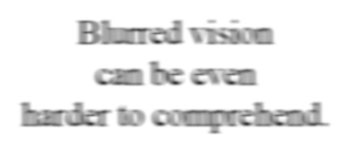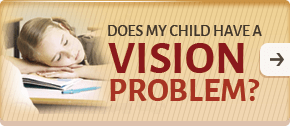Advanced Treatment for Convergence Insufficiency (CI) and Binocular Vision Dysfunction (BVD)
What is Convergence Insufficiency? What is BVD?
Convergence Insufficiency Study by the National Eye Institute (NIH) Your eyes are designed to work together as a team to produce a single image. To do this, they both must aim and focus on the same point. This process is known as eye teaming.
When you look at an object up close, your eyes must turn in (converge) in order to maintain proper eye teaming. Convergence Insufficiency (CI) is the inability of the eyes to converge comfortably and sustain convergence while focusing on an object up close, such as a book or computer.
Binocular Vision Dysfunction (BVD) is a condition where the eyes are slightly misaligned and the brain has difficulty matching the images. It is an eye teaming disorder and can cause symptoms such as dizziness, motion sickness, difficulty with periphery, headaches, and eye fatigue.
Easily Misdiagnosed as an Attention Disorder
A person with Convergence Insufficiency will find it difficult and uncomfortable to concentrate on reading and other up-close activities for extended periods of time. This is often mistaken to be an attention disorder. In addition, children are often unaware that there is something unusual about their vision.
Study Regarding the Relationship between Convergence Insufficiency and ADHD
Symptoms of Convergence Insufficiency
Possible symptoms include
- Reading Slowly
- Loss of Place when Reading
- Difficulty with Concentration
- Eye Strain
- Headaches
- Blurry Vision
- Double Vision
A person with Convergence Insufficiency may find it challenging to work up close comfortably (such as when reading, writing or doing schoolwork) comfortably for extended periods of time and quite often they will avoid such activities.


How is it Treated?
The preferred treatment for Convergence Insufficiency or Binocular Vision Dysfunction is vision therapy. A specifically prescribed program of once or twice a week in-office therapy combined with at-home activities has proven to be the best approach to train the brain to utilize both eyes together comfortably and efficiently. The goal is to eliminate the sypmtoms our patients experience due to their deficient eye teaming skills, so that they are able to read and perform near point activities comfortably, for extended periods, without fatigue.
In other cases, CI and BVD can be treated with specialized lenses, prism, and/or tints in eyeglasses.










